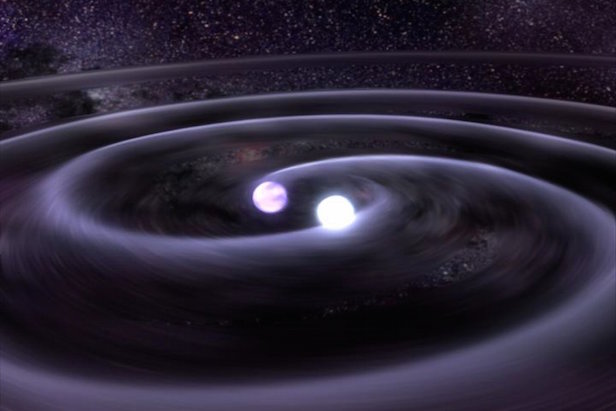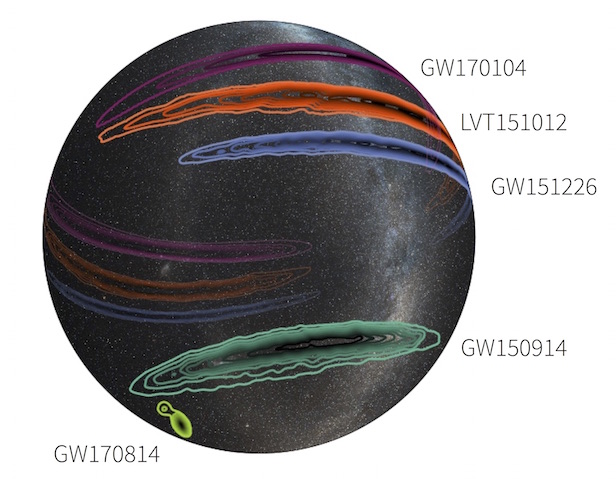New gravitational wave detection reveals ripples from black hole smash
This is the first three-detector observations made of these waves in the fabric of space-time

GW170814 was the result of a merger of black holes that were 31 and 25 times the mass of the Sun. Image credit: NASA
A fourth gravitational wave detection has been acquired, but this time it has been a joint detection by the Laser Interferometer Gravitational-Wave Observatory (LIGO) Scientific Collaboration and the Virgo Collaboration. This is the first detection of black holes merging by the newly introduced Virgo detector; this emphasises the importance of a multi-detector network for detecting these ripples in the fabric of space-time.
Gravitational waves are a consequence of a binary black hole merger or the explosion of an enormous star. In this case, it is the merging of two black holes, and the resulting energy expulsion ripples through space-time. These ripples can be compared to when a stone is dropped in a pond. Gravitational waves are detected on Earth by the LIGO and Virgo detectors, and this has provided more tantalising evidence for Einstein’s one hundred year old General Theory of Relativity.
The observations were made on 14 August 2017 at 10:30 UTC, leading astronomers dubbing it as GW170814. The two black holes had masses of about 31 and 25 times the mass of the Sun, and when they merged 1.8 billion light years away, they merged to form a paramount black hole about 53 times of the mass of the Sun. This led to a gravitational wave of three solar masses travelling to Earth, which was detected by the LIGO and Virgo collaboration 1.8 billion years later.

There have been four confirmed gravitational wave detections to date now, and the latest (GW170814) has greater sky localization thanks to the introduction of Virgo. Image credit: MIGO/Virgo/Caltech/MIT/L. Singer/ A.Mellinger
“Little more than a year and a half ago, the National Science Foundation (NSF) announced that its Laser Gravitational-Wave Observatory had made the first-ever detection of gravitational waves resulting from the collision of two black holes in a galaxy a billion light-years away,” says France Córdova, NSF director. “Today, we are delighted to announce the first discovery made in partnership between the Virgo Gravitational-Wave Observatory and the LIGO Scientific Collaboration, the first time a gravitational-wave detection was observed by these observatories, located thousands of miles apart. This is an exciting milestone in the growing international scientific effort to unlock the extraordinary mysteries of our universe.”
The LIGO collaboration consists of two laser interferometers, one in Livingston, Louisiana, and the other at Hanford, Washington, and the NSF funds both. The Virgo detector is located much further away at Pisa, Italy and joined the second observing ‘O2’ run on 1 August 2017.
Keep up to date with the latest reviews in All About Space – available every month for just £4.99. Alternatively you can subscribe here for a fraction of the price!




